Behind the Scenes
UNITY OVER UNREAL 5
We carefully deliberated and concluded that the Unity game engine was the optimal choice for our project when compared to Unreal Engine. One of the paramount factors influencing our decision was our team's profound proficiency with Unity. This deep-rooted understanding of the engine empowers us to navigate challenges efficiently and tap into its full potential.
Furthermore, Unity's scripting environment proved to be a pivotal advantage. Its intuitive nature facilitates dynamic script writing, enabling us to swiftly implement and iterate upon game mechanics. This agility is instrumental in fine-tuning gameplay elements and rapidly responding to design iterations.
In addition, the capability to craft bespoke editor tools in Unity was another decisive factor. These custom tools not only expedite our workflow but also grant us the freedom to tailor our development environment according to our precise requirements. This flexibility fuels our creativity and empowers us to bring our creative visions to life with precision.
In retrospect, the decision to adopt Unity aligns harmoniously with our team's strengths and aspirations. By capitalising on our adeptness with Unity's toolkit and harnessing its scripting prowess and versatile editor, we are poised to deliver a captivating and polished game that resonates seamlessly with our vision.
---------------------------------------------------------------------------------------------------
IMPLEMENTATION OF EMERGING TECHNOLOGY
Implementing emerging technologies like AI, specifically tools like MidJourney or ChatGPT, into your digital game product can enhance user experience and engagement and speed up the design development process.
AI MidJourney (MidJourney)
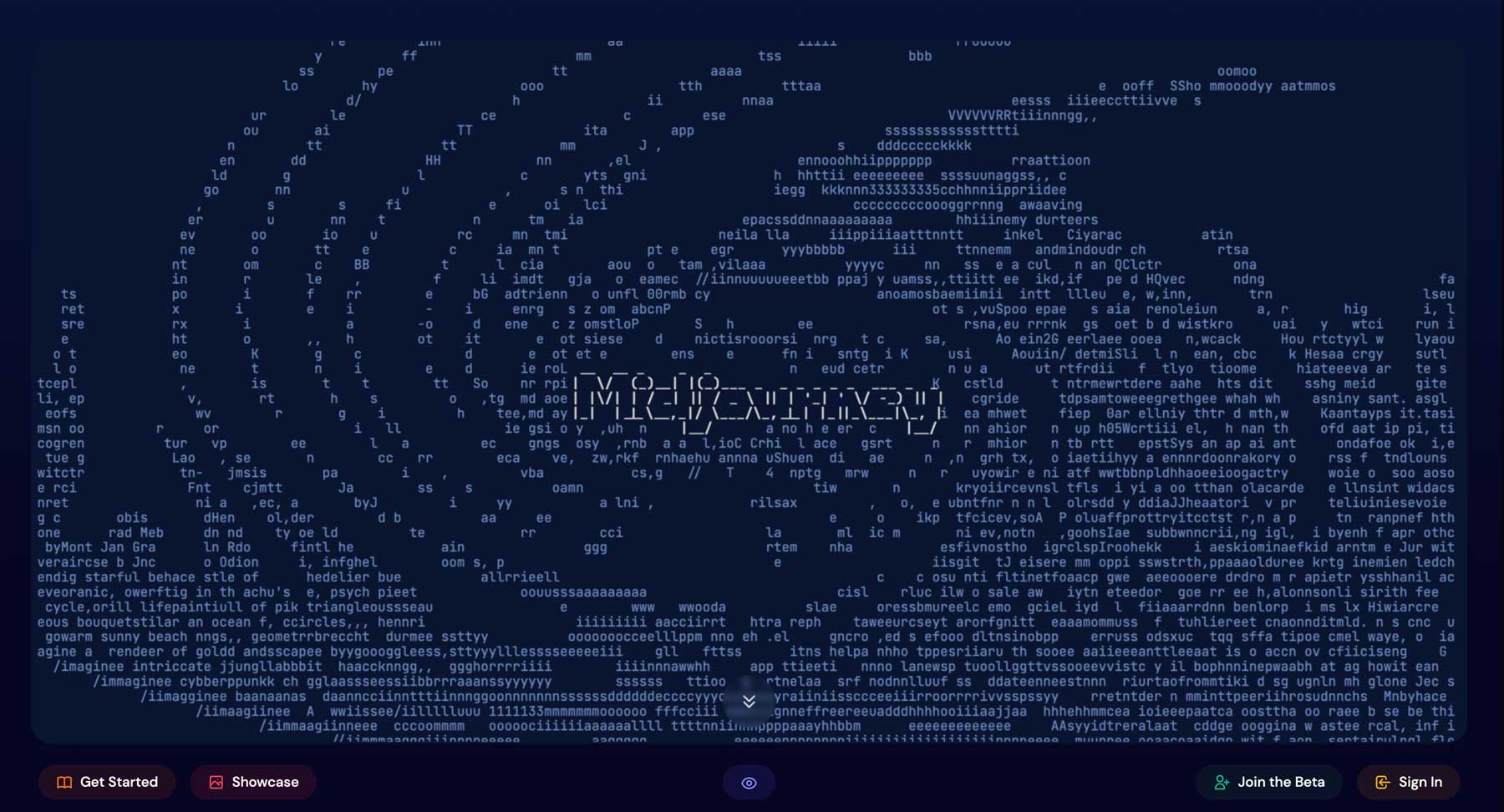
Due to the compact size of our team, we made effective use of Midjourney to visually represent fundamental concepts during the initial stages of development. This tactical choice yielded significant time savings that could then be channelled into other essential tasks.
One of the standout advantages was the improved communication facilitated by Midjourney. By employing this tool, our programmers were adept at conveying the project's vision to the artists in a more tangible and coherent manner. This visual representation bridged the gap between technical aspects and artistic interpretation, fostering a more collaborative and productive environment.
Furthermore, the adoption of Midjourney positively impacted our project's workflow by facilitating swift and concise communication. As a result, the team was able to allocate more time and energy to critical areas of development, fostering a cohesive and streamlined process.
---------------------------------------------------------------------------------------------------
MERGING PROJECTS PROCESS & SOURCE CONTROL
After exploring various approaches to merge our projects in Unity, including importing one project as a Unity package and utilizing Plastic SCM for collaboration, we unfortunately encountered difficulties and none of these solutions proved successful. As a result, we decided to take a different route.

We created a new repository in Unity and began the process of bringing assets from our previous projects as Unity packages. This involved carefully selecting the necessary files and integrating them into the new project structure. Additionally, we ensured that all settings were properly restored and adjusted any materials to align with the required render pipelines.
While this approach required some manual effort and meticulous editing, it allowed us to consolidate our work and proceed with the project. Despite the initial setbacks, we are now in a better position to continue our development and overcome the challenges we encountered during the merging process.
Moving forward, it is important for us to maintain clear communication and establish robust version control practices to prevent such issues in the future. This will help streamline our collaboration and ensure a smoother integration of projects in Unity.
---------------------------------------------------------------------------------------------------
PLAYER MECHANICS
Implementing character mechanics and tuning character movement in a game can present several challenges for game developers. These challenges arise from the need to create fluid and responsive controls that feel satisfying to players while also aligning with the game's overall design and intended experience. Here are some of the challenges we've encountered:
- Stuttering or jittery movement
- Unintended collisions and physics Issues
- Unnatural movement or animation transitions
Addressing these challenges often requires thorough testing, debugging, and iterative refinement of the character movement mechanics. It may involve optimizing code and calculations, adjusting physics settings, fine-tuning animation transitions, or reevaluating the design of the movement system. Paying attention to player feedback and conducting playtesting sessions can help identify and address these issues early in the development process, resulting in smoother and more enjoyable character movement in Unity-based games.
---------------------------------------------------------------------------------------------------
Revamping the Player Climbing System for a Thrilling Adventure
After multiple iterations and careful consideration, we've decided to embark on a new direction that promises a more advanced and immersive experience for players as they explore the vast world within our game.
🧗 Embracing Complexity for Enhanced Gameplay:
By introducing a new method, we aim to immerse players in a world that challenges their skills and abilities. This system opens up a plethora of possibilities, allowing players to navigate intricate level designs, ascend to greater heights, and uncover hidden secrets. The enhanced complexity adds an extra layer of engagement and satisfaction, making each climb a rewarding adventure in itself.
🏞️ Unlocking Intricate Level Design:
The introduction of a more advanced climbing system unlocks a world of possibilities when it comes to level design which means more freedom to craft intricate and vertical environments that encourage exploration and discovery.
---------------------------------------------------------------------------------------------------
🧗 Breaking New Heights: Introducing Our Completed Climbing System! 🧗
Get ready to defy gravity, conquer new challenges, and experience the thrill of vertical exploration like never before. The completion of our climbing system marks a significant milestone in our game's development, and we can't wait for you to embark on this epic journey with us
--------------------------------------------------------------------------------------------------
⚡ Introducing the Exciting New Player Mechanic: Energy Bar with Recharging Zone! ⚡
🔋 The Energy Bar:
Atlas' actions and abilities are now powered by an energy reserve, giving you a new layer of strategy and decision-making. Every move you make, from using powerful skills to executing swift dodges, will consume a portion of your energy.
🔄 The Recharging Zone:
To keep the action flowing, we've introduced Recharging Zones strategically placed throughout the game's world. Stepping into one of these zones will initiate a swift energy recharge, allowing you to replenish your energy reserves and get back into the action without delay.
🎯 Balancing Strategy and Resource Management:
The Energy Bar mechanic adds a fresh challenge for players to master. You'll need to balance your energy consumption carefully, ensuring you have enough reserves to unleash devastating attacks at crucial moments, while also managing your movement and evasive actions.
---------------------------------------------------------------------------------------------------
3D GAME ASSETS CREATION
Overcoming Challenges in Game Development
One of the primary challenges in 3D asset creation is striking the delicate balance between visual quality and optimal performance. While we strive to create visually stunning assets that captivate players, we must also ensure that these assets can run smoothly within the constraints of hardware limitations. This requires meticulous attention to detail, optimization techniques, and finding innovative solutions to maintain visual fidelity without sacrificing performance.
Creating 3D assets involves understanding the technical constraints imposed by the chosen game engine and target platforms and achieving artistic cohesion and a consistent style across diverse 3D assets is another challenge faced by game developers. Each asset must align with the overall visual direction of the game while maintaining its unique identity.
Developing high-quality 3D assets is a time-consuming process that demands effective resource management. From concept design to modeling, UV mapping, LODs implementation, texturing, Unity implementation, each step requires significant attention to detail and expertise. Meeting project deadlines while ensuring the highest quality assets is a constant juggling act. It necessitates careful planning, allocation of resources, and efficient workflows to optimize productivity and deliver outstanding results within the project's timeframe.
Balancing realism with innovative design can be a challenging endeavor. While striving for realism, we also want to introduce unique and imaginative elements that set our game apart. This involves pushing the boundaries of creativity, exploring new techniques and technologies, and finding the right balance between familiar and extraordinary. It requires continuous research, experimentation, and an open mindset to create visually striking and engaging assets that captivate players' imaginations.
Crafting All 3D Game Ready Assets Using Houdini:
Each asset has been meticulously designed and crafted in Houdini, ensuring the utmost attention to detail. From intricately modeled structures to realistic textures and eye-catching effects, these assets will transport you to a world brimming with immersive and captivating visuals.

Houdini has gained recognition as one of the best software options for crafting 3D game-ready assets due to its exceptional features and capabilities that cater specifically to the needs of game developers and artists. Here are the key reasons why Houdini stands out:
- Procedural Workflow: Houdini's procedural approach allows artists to create assets algorithmically, enabling the generation of variations and complex assets with ease. This is invaluable for efficiently creating diverse game environments and objects.
- Node-Based System: The node-based system in Houdini facilitates a non-destructive workflow, enabling artists to experiment, iterate, and make changes without losing the original asset. This is crucial for the iterative nature of game development.
- Parametric Modeling: Houdini's parametric modeling tools enable the creation of assets with adjustable parameters. This is particularly useful for creating assets that need to adapt to different in-game contexts or for generating customizable objects.
- Procedural Texturing: The procedural texturing capabilities in Houdini allow artists to create textures algorithmically, making it easier to generate variations, maintain consistency, and optimize textures for game performance.
- Simulation and Effects: Game assets often require dynamic animations and effects. Houdini's powerful simulation tools enable the creation of realistic cloth, fluids, particles, and more, enhancing the visual appeal and immersion of games.
- UV Unwrapping and Baking: Houdini's advanced UV unwrapping tools ensure accurate texture application, while texture baking allows for transferring high-resolution details to low-polygon models, essential for maintaining visual quality in games.
- Level of Detail (LOD) Generation: Houdini's procedural approach makes generating LODs for game assets efficient. It can automatically generate lower-polygon versions of models while preserving their visual quality, optimizing performance.
- Industry Adoption and Integration: Houdini is widely adopted in the game development industry, and its integration with popular game engines and pipelines makes it a practical choice for studios aiming to streamline asset creation.
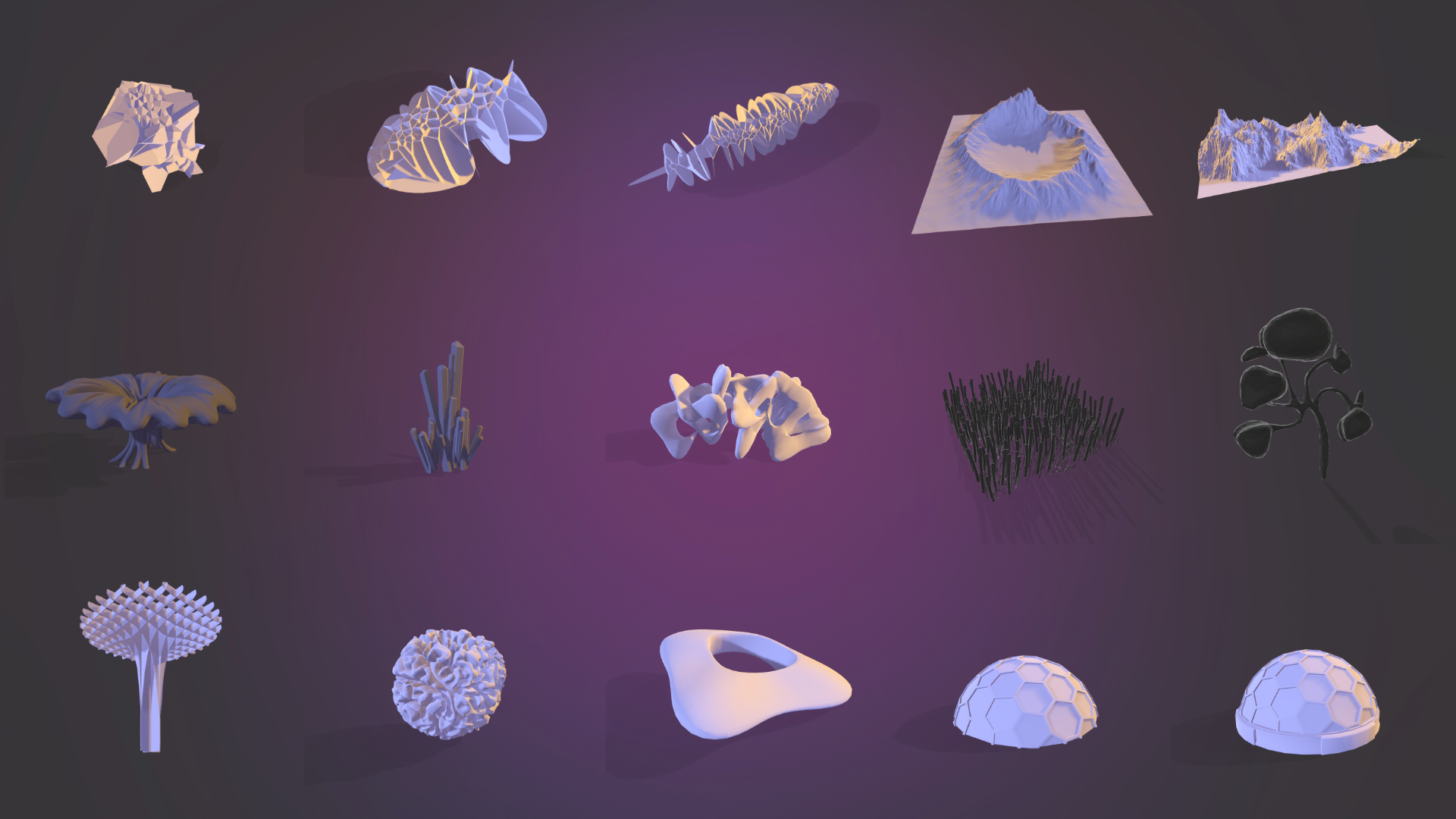
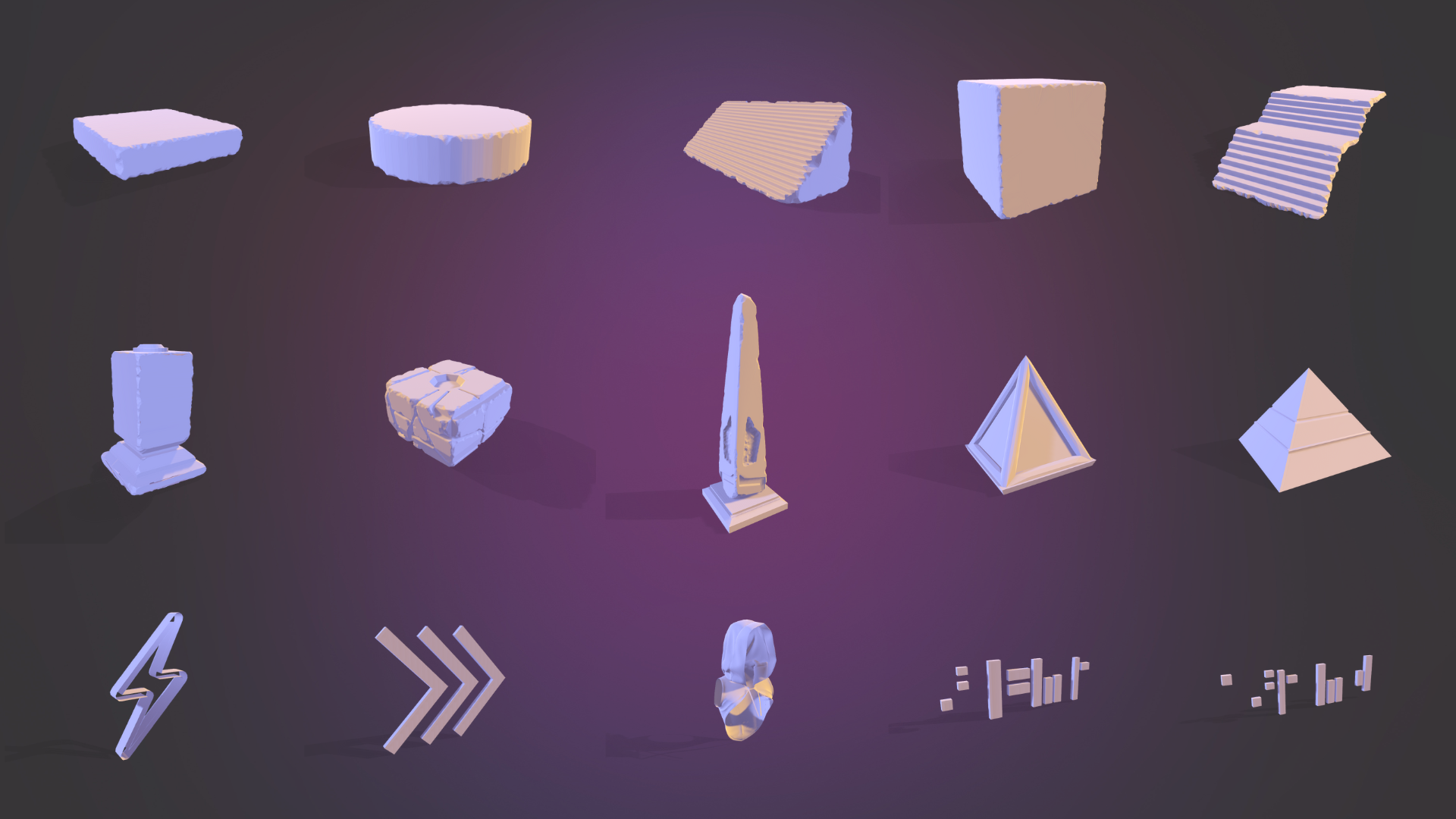
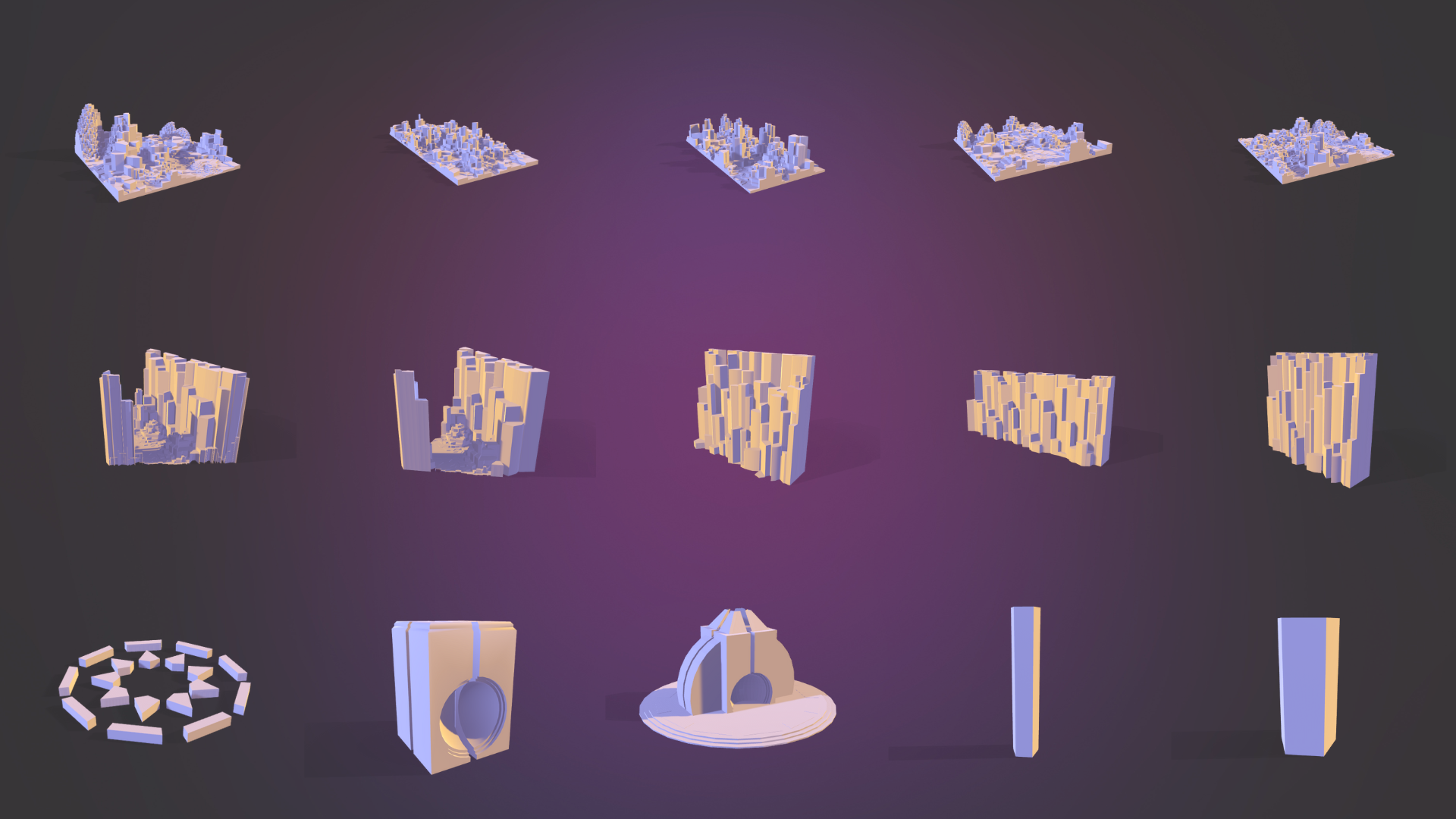
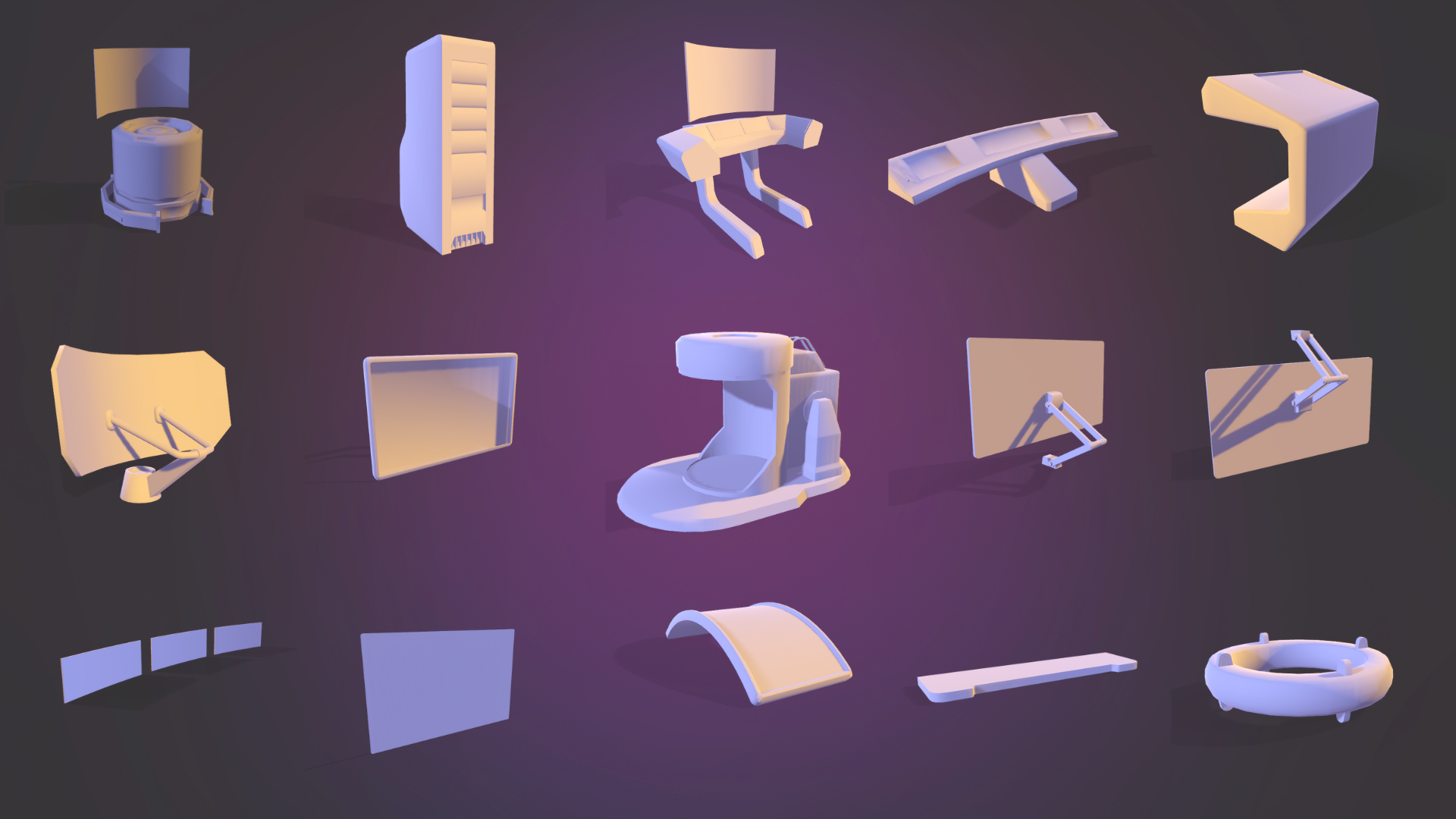
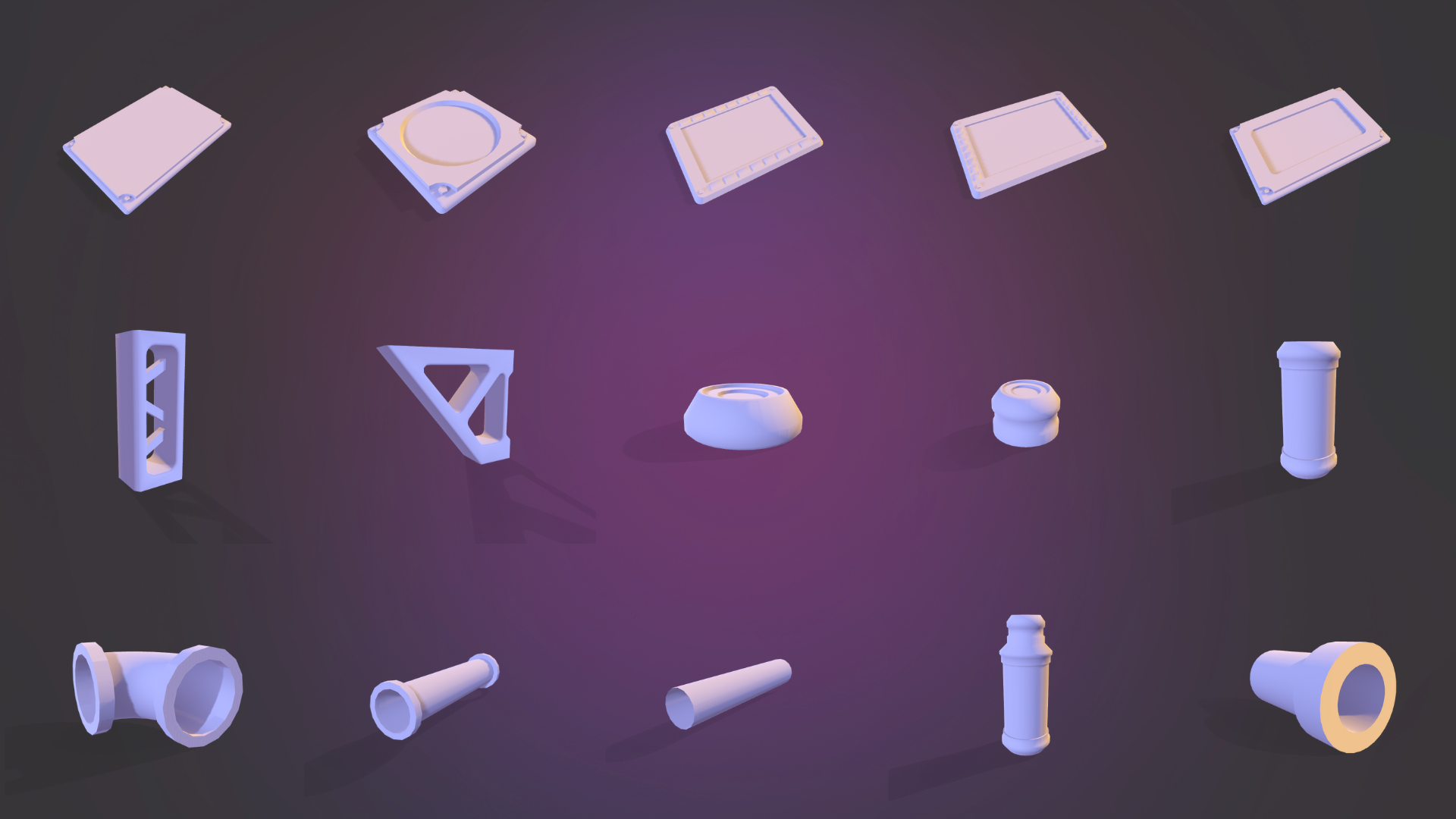
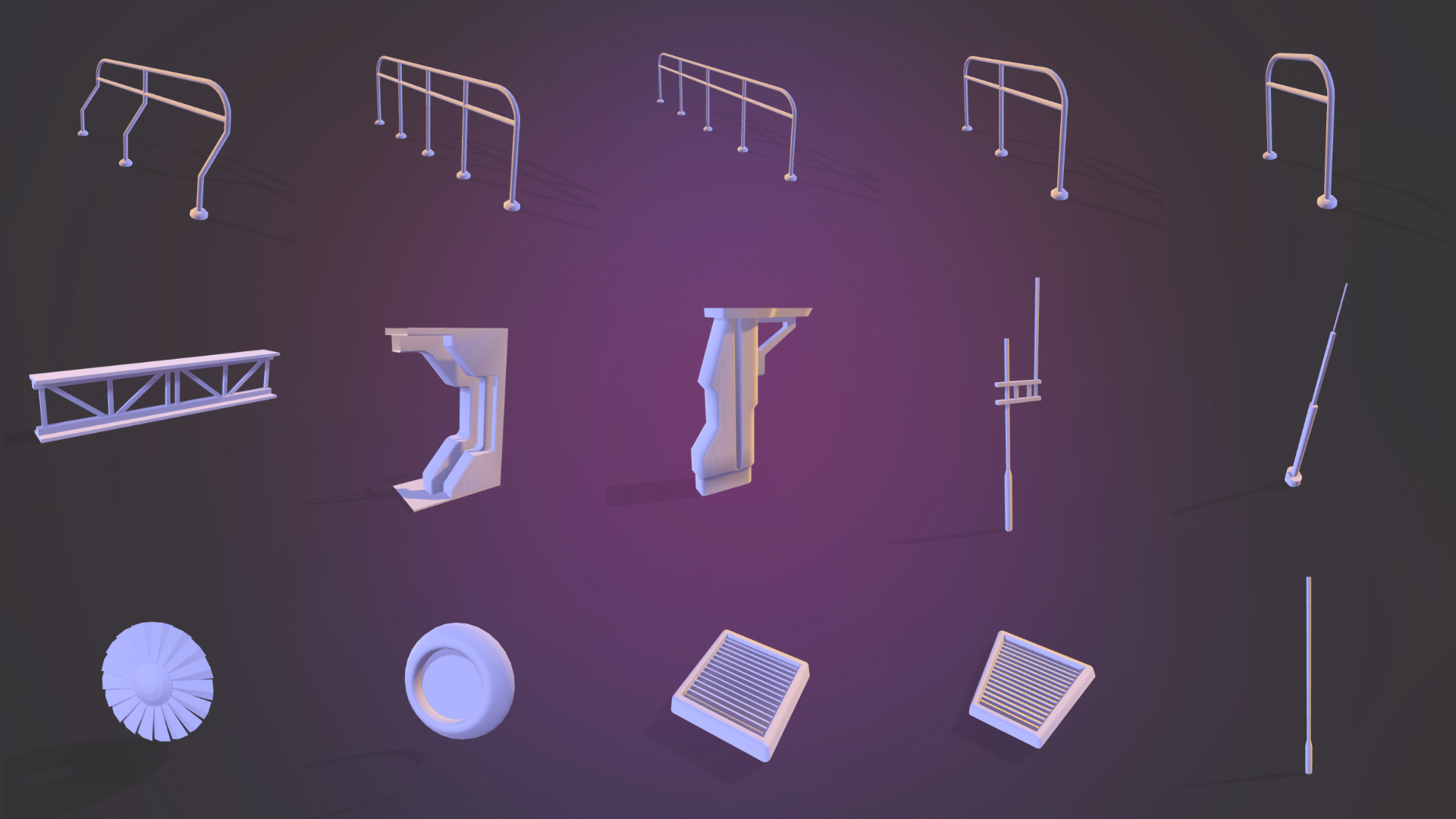
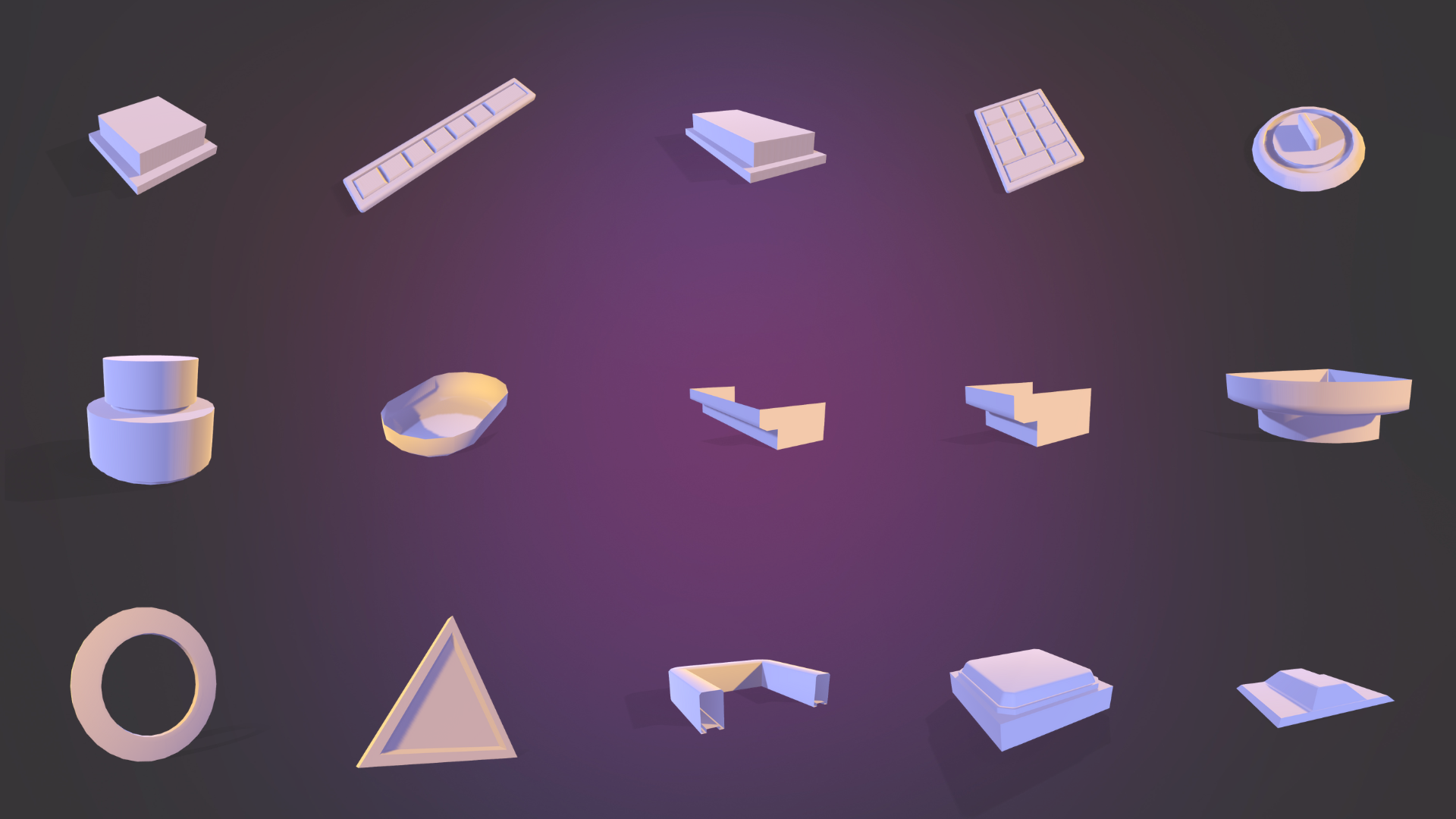
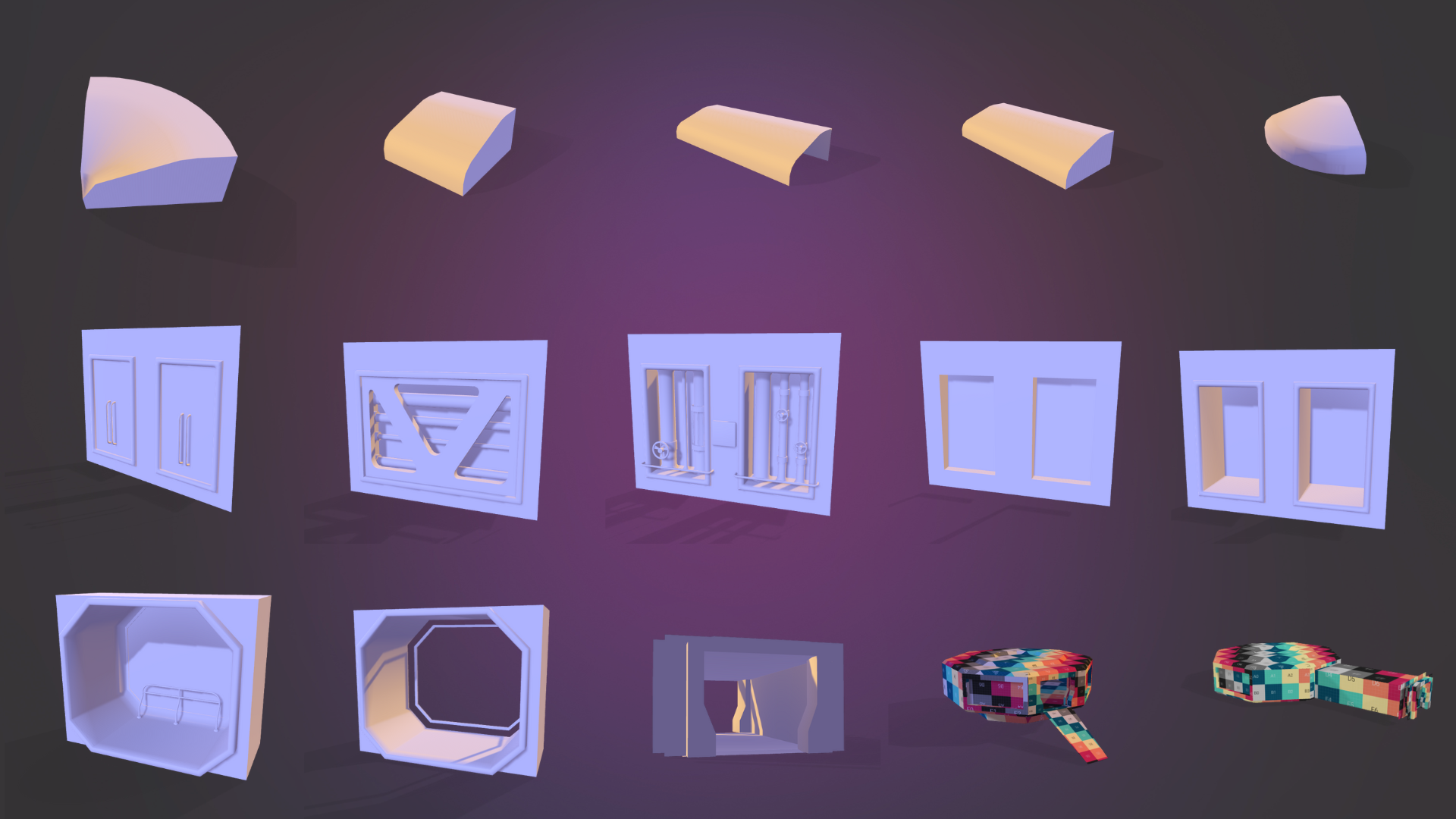
---------------------------------------------------------------------------------------------------
⚙️ Optimized Performance:
We understand the importance of optimized performance in creating a seamless gaming experience. That's why we have diligently optimized each 3D game asset using Houdini's powerful tools and techniques. Through careful consideration of poly counts, UV mapping, and LODs (Level of Detail), we've achieved a balance between visual fidelity and smooth performance, allowing you to fully immerse yourself in the game without any lag or slowdown.

🎨 Textured in Substance Painter:
To bring our 3D game assets to life, we turned to the incredible capabilities of Substance Painter. This powerful texturing software has allowed us to create realistic and visually stunning textures that enhance the overall look and feel of each asset. From weathered surfaces to vibrant colors and intricate patterns, the textures in our game assets will draw you further into the immersive world we've created.

✂️ Empowering Creativity with Material Trim Sheets:
With its node-based workflow and extensive range of customizable features, we have harnessed the power of Substance Designer to craft intricate and versatile material trim sheets that enhance the overall aesthetics of our game. This approach not only saves valuable production time but also enables us to experiment with different variations and combinations, resulting in visually diverse and captivating game assets.

🔍 UV Mapping for Seamless Textures:
To ensure seamless and high-quality texturing, our team meticulously executed UV mapping on each 3D game asset. This process ensures that textures align flawlessly with the geometry, preventing any visual inconsistencies. The result is a visually pleasing and cohesive experience as you explore the game world, where textures flow seamlessly across surfaces, enhancing immersion and realism.

---------------------------------------------------------------------------------------------------
LEVEL DESIGN
Challenges in Designing Balanced Levels for an Otherworldly Game
🌍 Embracing the Alien Aesthetic:
One of the main challenges in level design for an alien planet is striking the right balance between creating a visually stunning environment and maintaining gameplay functionality. It's essential to embrace the otherworldly aesthetic while ensuring that players can navigate the terrain, decipher pathways, and interact with the surroundings. Designing unique flora, strange rock formations, and captivating architecture requires careful attention to detail to create an immersive world that captivates players' imaginations.
⚖️ Balancing Exploration and Challenge:
Creating a balanced level design involves striking a harmonious blend between exploration and challenge. The allure of an alien planet lies in its vastness and the mystery it holds. However, it's crucial to provide players with clear objectives and a sense of direction while allowing room for free exploration. Balancing the freedom to wander with a structured progression ensures that players are engaged and motivated while still experiencing the thrill of venturing into the unknown.
🔐 Unlocking Secrets and Rewards:
A key aspect of level design in an adventure game is hiding secrets and rewarding exploration. Designing hidden areas, puzzles, and collectibles adds depth to the gameplay experience and encourages players to thoroughly explore the alien planet. Striking the right balance between accessibility and challenge in these hidden areas ensures that players are enticed to explore further and reap the rewards of their curiosity.
🗺️ Navigating a Foreign Landscape:
Designing a coherent and intuitive navigation system within an alien world can pose unique challenges. Players must be able to understand the layout of the environment, discern paths, and orient themselves despite the unfamiliar terrain. Implementing clear visual cues, intuitive map systems, and landmark-based navigation helps players find their way and prevents frustration or confusion within the game world.
💡 Ensuring Dynamic Gameplay:
Creating an engaging level design for an alien planet means ensuring dynamic gameplay. This involves incorporating a variety of gameplay elements such as platforming, puzzles, combat encounters, and interactive objects. By offering diverse gameplay experiences, players remain captivated and motivated to explore further, unlocking new abilities, encountering unique challenges, and unraveling the mysteries of the alien world.
✨ Fostering Player Immersion:
Above all, the ultimate goal of level design is to immerse players in an alien world that feels both authentic and captivating. Achieving this requires attention to detail, meticulous world-building, and a deep understanding of player engagement. Incorporating ambient sounds, atmospheric effects, and interactive elements that respond to player actions enhances immersion and makes the alien planet feel alive and dynamic.
Crafting balanced level design for an adventure game set on an alien planet is a thrilling and complex endeavor. It demands a delicate balance between visual aesthetics, gameplay mechanics, and player engagement.
---------------------------------------------------------------------------------------------------
GAME TEST & PLAYER FEEDBACK
🎮 Testing the Waters: The Importance of Playtesting
Playtesting is a crucial phase in game development, particularly when it comes to level design. It allows us to observe how players interact with our levels, identify potential issues, and gain valuable insights into the player experience. By closely observing playtest sessions, we can gather firsthand feedback, discover areas of confusion or frustration, and gain a deeper understanding of what aspects resonate with players.
📝 Collecting Player Feedback:
The Power of Insights Player feedback is a treasure trove of insights that guides our decision-making process. Through surveys, questionnaires, or live testing, we were able to gather feedback on various aspects of the levels, such as level layout, difficulty, pacing, and overall enjoyment. Analyzing and categorizing this feedback helps us identify common patterns and prioritize the most impactful changes to enhance the player experience.
⌛ The Challenge of Polishing:
Defining "Enough" One of the ongoing challenges in game development is determining when polishing is sufficient. The desire to create a flawless experience can be alluring, but it's important to strike a balance between refinement and project scope. Time and resource constraints often necessitate making difficult decisions on what aspects to prioritize for polishing and when to move forward with development. This requires careful consideration of the game's vision, player feedback, and the available development timeline.
🕒 Time Management:
Setting Realistic Goals Managing time effectively is crucial in the development process. By setting realistic goals and establishing clear milestones, we ensure that the necessary time for playtesting and implementing player feedback is accounted for. Establishing a well-defined schedule allows us to balance iterative improvements with the need to progress through development phases, ensuring that our levels evolves while staying within the project's timeframe.
🚀 The Iterative Nature of Game Development:
Game development is an iterative process, and perfection is often an ongoing pursuit. While it's important to dedicate time to polish and refine the Tomb level, it's equally essential to recognize that there will always be room for improvement. Embracing an iterative mindset allows us to continuously enhance the gameplay experience, even after the initial release, through post-launch updates and patches that address remaining issues and incorporate additional player feedback.
---------------------------------------------------------------------------------------------------
IMMERSING THE SENSES
Elevating Gameplay with Visual Effects, Audio Themes, and Sound Effects
🌌 Visual Effects: Breathing Life into the Game World
Visual effects play a pivotal role in transforming our game world into a mesmerizing tapestry of sights and wonders. From dazzling effects to atmospheric particle systems, each visual effect has the power to create a sense of awe, immersion, and dynamism. By carefully integrating visual effects into the gameplay, we bring the world to life, heightening the sense of danger, enchantment, and wonder that awaits players around every corner.
🎶 Audio Themes: Setting the Mood and Atmosphere
Audio themes serve as the sonic backbone of our game, setting the mood and atmosphere for each unique location and situation. From haunting melodies that evoke a sense of mystery to epic scores that ignite the spirit of adventure, our carefully crafted audio themes engage players on an emotional level, transporting them deeper into the game world. Each musical composition enhances the narrative, amplifying the impact of every triumph, challenge, and discovery along the way.
🔊 Sound Effects: Immersive Auditory Feedback
Sound effects provide crucial feedback and immersion in the world we've created. The crunch of footsteps on alien terrain, the rustling of leaves in the wind, the distant rumble of a collapsing structure—all these auditory cues enrich the player's experience and add depth to the gameplay. By meticulously selecting and designing sound effects, we ensure that every action and interaction within the game world is accompanied by a corresponding auditory response, enhancing the player's sense of presence and involvement.
🎨 Synergy in Design: Uniting Visual and Audio Elements
The true magic lies in the seamless synergy between visual effects, audio themes, and sound effects. When these elements harmoniously work together, they create a multi-dimensional experience that captivates the senses and elevates gameplay to new heights. A thunderous explosion synchronized with a dazzling visual burst, a soaring melody accompanying a breathtaking vista, or the subtle ambiance of an alien ecosystem—all these combined elements transport players into a fully immersive and unforgettable gaming experience.
📣 The Power of Iteration: Refining the Sensory
Experience As with any creative endeavor, iteration is key. Continuously refining and iterating on visual effects, audio themes, and sound effects allows us to fine-tune the sensory experience and ensure that it aligns with our vision. Player feedback also plays a crucial role in this iterative process, helping us identify areas where the sensory elements can be further improved to enhance gameplay, evoke emotional responses, and leave a lasting impact on our players.
---------------------------------------------------------------------------------------------------
GAME OPTIMISATION
Game optimization is a crucial step in the development process to ensure that a video game runs smoothly and efficiently on various platforms and hardware configurations. The optimization process begins by identifying performance bottlenecks and addressing them to achieve a balance between design and performance without sacrificing the game's artistic vision.
A key aspect of this process is striking a delicate balance between the captivating design envisioned by our creative teams and the imperative need for smooth performance.
The challenges that arise in this process stem from the inherent tension between design intricacies and technical limitations. The artistry, storytelling, and visual effects that constitute the core of game design can often push hardware resources to their limits, resulting in frame rate drops, stuttering, or other performance issues. However, the essence of a game's appeal lies in these design elements, making their preservation paramount.
In navigating this challenge, constant collaboration among multidisciplinary teams is essential. Artist and programmer work closely to harmonize the visual and interactive aspects of the game with its underlying technical infrastructure. Regular discussions center around understanding the importance of each design element, the performance implications it carries, and the potential trade-offs required.
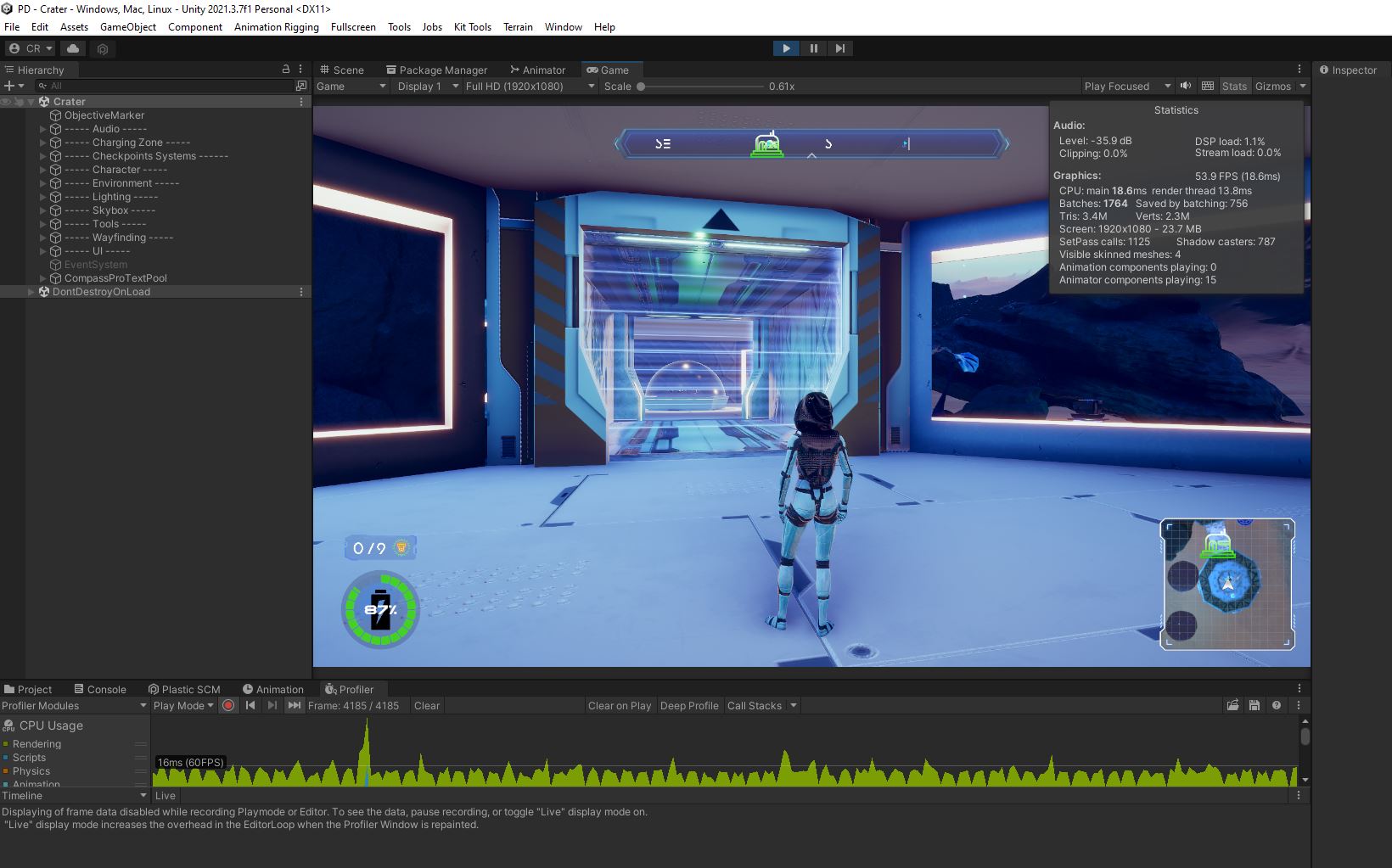
The introduction of tools such as Unity Profiler and Unity Stats plays a pivotal role in this process. Unity Profiler provides an intricate view into the inner workings of the game, revealing resource consumption, rendering times, and code execution. Unity Stats offer a real-time glimpse into performance metrics during actual gameplay. Both tools empower developers to pinpoint bottlenecks and assess their impact on performance.
Ultimately, the pursuit of optimization is more than just fine-tuning numerical metrics; it's a quest to elevate player experiences. By addressing performance bottlenecks while preserving the design's artistic integrity, the process of game optimization aims to enhance gameplay engagement and satisfaction. This iterative process underscores the significance of adaptability and constant refinement in the ever-evolving landscape of game development.
---------------------------------------------------------------------------------------------------
Stay tuned for more updates as we continue to refine and expand our game. Happy gaming, brave adventurers!
Get Project Discovery
Project Discovery
3rd-person Adventure
| Status | Released |
| Authors | cellochica, smitel06@hotmail.com |
| Genre | Adventure, Puzzle |
| Tags | Atmospheric, Exploration, Open World, Sci-fi, Space, Third Person, Unity |
More posts
- Breaking News: Project Discovery's Final Release Is Here!Aug 27, 2023
- Ready, Set, Beta Test! Join Us and Share Your Expertise in Testing Our Game!Jul 23, 2023
- Behind the TeamJul 23, 2023
- Level Two Unleashed: Join the Beta Testers and Shape the Game!Jul 03, 2023
- Unleashing the Unknown: Level One Beta Testing Begins!Jul 03, 2023
- Behind the TombJun 05, 2023
- Behind the CraterJun 05, 2023
- Behind the CaveJun 05, 2023
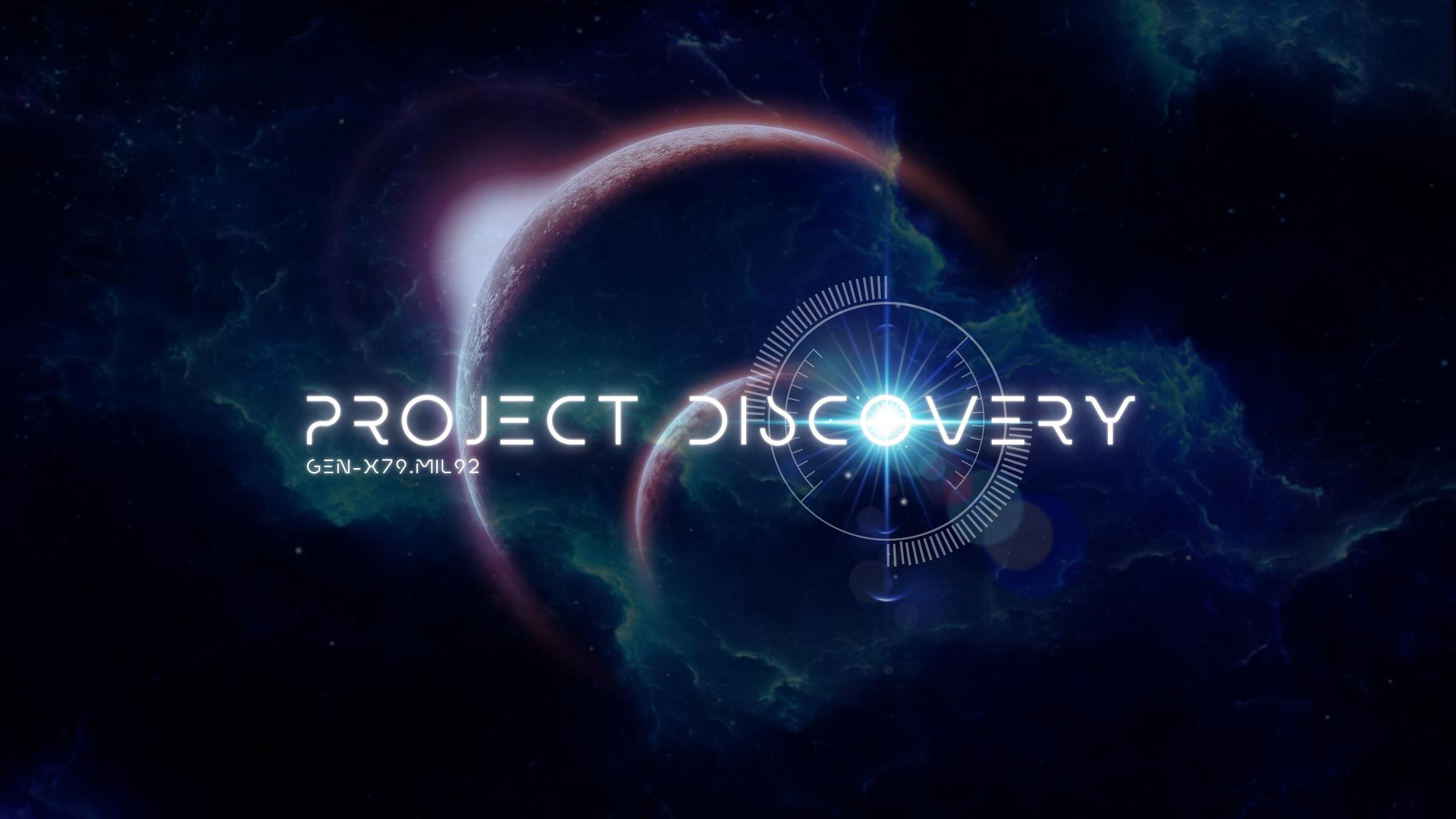

Leave a comment
Log in with itch.io to leave a comment.